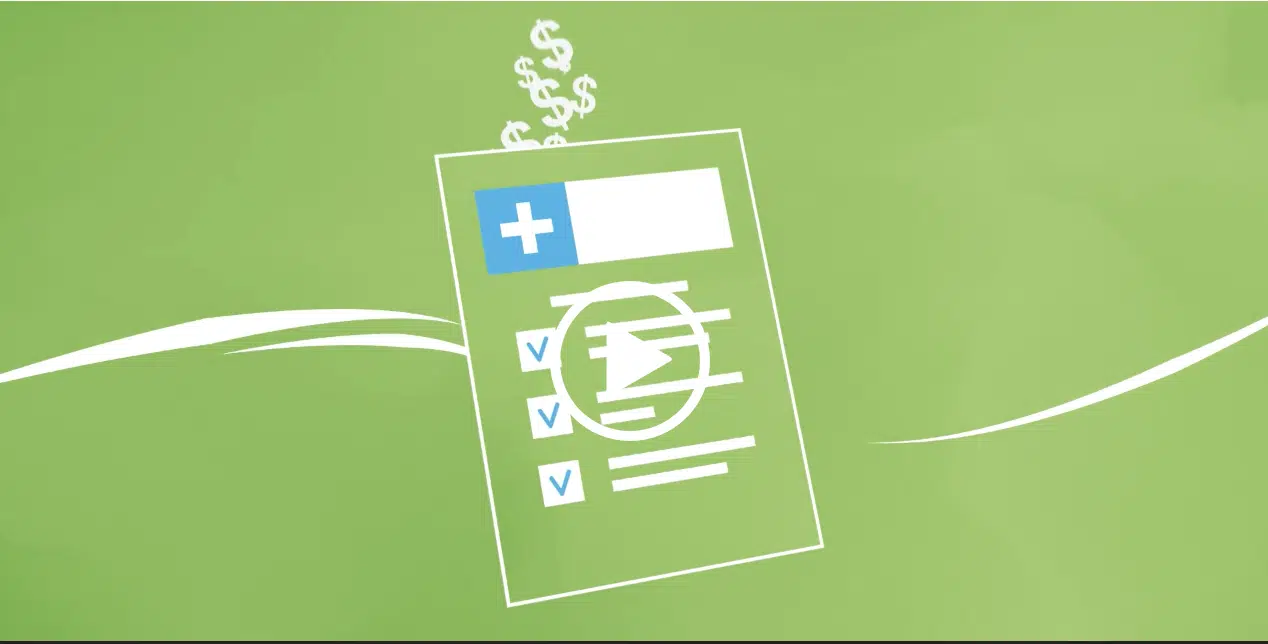For London-based writer Ziba Redif, the passive suicidal thoughts began in her late teens. She didn’t want to die, exactly, but in certain moments she struggled to see the future.
In an article for Refinery 29, she writes:
“Passive suicidal ideation — thinking about, but not planning, one’s own death — became a familiar coping mechanism between my late teens, and it persisted into my late twenties. I’ve never actively wanted to die. Most days, I enjoyed my life. I was invested in my plans and looked forward to the future. But every now and then, when things were particularly difficult, I wanted to close my eyes and disappear. Thinking about no longer existing was like an emotional reflex, something I sometimes defaulted to when faced with internal pain.”
She’s not alone in experiencing passively suicidal thoughts. People chimed in on the comments on her article to thank her for sharing how she sought help.
“It’s difficult to talk about since I’m not in ‘crisis’ and I don’t actually want to do it, it feels like I’m not sick enough or it will seem like I just want attention and there are so many others who have it worse than me,” wrote one commenter. “Thank you for showing me I’m not alone and it’s worth seeking help.”
“This is me almost every day for the past 2 months. Nice to actually have a term for it,” wrote another.
What is meant by “passively suicidal?”
Passively suicidal thinking is different than making active plans to commit suicide. However, passive ideation may still be a mental health warning sign.
Even though it differs from active suicidal ideation, a person with passive suicidal thoughts may still benefit from seeking treatment from a mental health professional. It’s important to note that “passive” in this case isn’t synonymous with “harmless.”
“Even if passive suicidal ideation appears to be fleeting, the risk of a suicide attempt is very real. The line between passive and active suicidal ideation is blurry,” according to a Healthline article. “The transition from one to the other can happen slowly or suddenly, and it’s not always obvious to the casual observer.”
“If your doctor diagnoses you with suicidal ideation, it means that you’re preoccupied with the idea of suicide,” according to a Healthline article. “You may regularly think about the way you would commit suicide or think about what life would be like if you weren’t around. You may also replay the suicidal act out in your mind.”
“From clinical experience, I would say that it’s far more common than people think it is,” Dan Reidenberg, PsyD, a psychologist and the executive director of the Suicide Awareness Voices of Education (SAVE) tells Refinery 29.
In fact, according to the SAVE website, suicide is the “11th leading cause of death in the U.S. Every day, approximately 132 Americans die by suicide. There is one suicide death in the US every 10.9 minutes.”
What factors contribute to passive suicidal ideation?
“A combination of factors usually underlies passive suicidal ideation,” James Overholser, PhD, a suicide researcher and professor of psychology at Case Western Reserve University in the Refinery 29 article. “These include severe or persistent depression, feelings of loneliness or rejection, and hopeless expectations for the future.”
Examples of passive suicidal ideations
Passively suicidal individuals may experience a range of different thoughts or daydreams. The following are examples of passive ideation, according to a Psycom article:
- “‘I hope someone crashes into my car.’
- ‘I don’t want to live anymore. I can’t take it.’
- ‘I hope I die in my sleep.’
- ‘I wish I was never born.’
- ‘They’d all be better off without me.’”
Ziba Redif describes her experience:
“Passive ideation manifested in my life as a blunted ache that rippled in and out of focus, usually accompanying periods of undiagnosed depression. Thinking about no longer existing served as a way to field overwhelming emotions – a temporary coping strategy that morphed into a patterned response to pain. When things felt viscerally bad, I imagined relief in going to sleep and never waking up again. But I never truly wanted to die.”
Risk factors associated with suicidal ideation

According to the Psycom article, here are eight potential risk factors that can cause suicidal ideation:
- “Many aspects of a family’s history, including violence, child abuse, neglect, trauma, or suicide, can all increase the risk that someone will experience suicidal ideation.
- Identifying as a member of the LGBTQ+ community without any support from family members or at home can increase risk factors.
- Friendships or relationships with an individual who has attempted suicide or completed their attempt.
- Feeling hopeless, secluded, or lonely.
- Perpetually engaging in reckless or impulsive behavior, especially if that behavior is self-destructive.
- Being unable to access care for mental illnesses.
- Living with a chronic illness, especially for those without an official diagnosis or those who don’t have treatment options available to reduce symptoms or improve quality of life.
- Problems in their life, from issues with work, a lack of funds, or any of a million other things that can go wrong.”
Common signs that someone is suicidal
Certain actions or behaviors may warn that a person could be moving toward active suicidal ideation. One of the key things to watch for is a significant change of behavior – if a person is suddenly very depressed or hopeless. Conversely, if a depressed and angry person has a very abrupt sudden change in behavior and acts relieved, that could also be a sign that a person is suicidal.
This kind of behavior may be the person “testing themselves to see if they can actually do it,” Justin Baker, clinical director of The Suicide and Trauma Reduction Initiative for Veterans at The Ohio State University Wexner Medical Center, tells CNN. “A lot of times people need to kind of work up to that actual making an attempt because it’s a biologic thing you have to go against, your own survival.”
According to the American Foundation for Suicide Prevention (AFSP) website, people should watch for how people talk, behave and their mood:
TALK:
- “Killing themselves
- Feeling hopeless
- Having no reason to live
- Being a burden to others
- Feeling trapped
- Unbearable pain”
BEHAVIORS:
- “Increased use of alcohol or drugs
- Looking for a way to end their lives, such as searching online for methods
- Withdrawing from activities
- Isolating from family and friends
- Sleeping too much or too little
- Visiting or calling people to say goodbye
- Giving away prized possessions
- Aggression
- Fatigue”
MOOD:
- “Depression
- Anxiety
- Loss of interest
- Irritability
- Humiliation/Shame
- Agitation/Anger
- Relief/Sudden Improvement”
Helping a loved one who is experiencing suicidal ideations
If you’re worried a loved one may be thinking of taking their own life, there are steps you can take to help support their mental health. According to the ASFP website, it can start with an honest conversation.
- “Talk to them in private
- Listen to their story
- Tell them you care about them
- Ask directly if they are thinking about suicide
- Encourage them to seek treatment or contact their doctor or therapist
- Avoid debating the value of life, minimizing their problems or giving advice.”
You might be able to provide helpful resources for your loved one so they can move forward.
“It’s also important to use constructive language when speaking with someone who has passive suicidal ideation. And while you’re not responsible for ‘saving’ or ‘fixing’ your friend, you can point them in the direction of helpful resources like the National Suicide Prevention Lifeline or the Trevor Lifeline, and encourage them to seek therapy. Loved ones can also call the NSPL themselves for support and resources,” according to Refinery 29.
Several mental health crisis hotlines are available. You can reach the National Suicide Prevention Lifeline by calling or texting 988. You can also text TALK to 741741 to text with a trained crisis counselor from the Crisis Text Line.
Treating suicidal ideation
Treatment for suicidal ideation can include the short-term goal of keeping a person away from risky behaviors, and longer-term treatment to help manage their mental health.
“In addition to the brief interventions that focus primarily on managing suicidal ideation and behavior, and medication regimens, there are treatments that focus on broad life, psychological and behavioral changes, that include managing suicidal thoughts and reducing behavior as a component,” according to the AFSP website. “Some of these treatments include Cognitive Behavioral Therapy-Suicide Prevention (CBT-SP), Dialectical Behavior Therapy (DBT), Attachment Based Family Therapy (ABFT), and Prolonged Grief Therapy (PGT) for survivors of suicide loss.”
One commenter on the Refinery 29 article writes that they receive ongoing care for passively suicidal thoughts as part of treatment for major depressive disorder.
“I’ve had this since 2005 (I’m in treatment) and it can ebb and flow in it’s [sic] intensity. Fortunately I have a wonderful psychiatrist and psychologist that collaborate on my mental health, and understand this aspect of my major depression,” they write.
As part of receiving mental health treatment, a person may work to understand what’s leading them to suicidal thoughts.
According to Healthline, “Knowing your triggers for depression and suicidal ideation can help you avoid or better manage these triggers in the future.
- Keep track of situations you find stressful and how you handle them.
- Keep a journal to help you understand and manage your feelings.
- Find ways to relieve stress, such as physical activity or talking with a friend.
- Seek help at the first signs of depression.
- Call 911 if you’re having thoughts of suicide.”
What is the outlook?
As for Ziba Redif, reaching out to others helped her over time. “Passive suicidal ideation wasn’t jettisoned out of my life overnight. Through a combination of therapy, honesty, connection, and lifestyle changes, the intensity and frequency of these thoughts lessened over time, as they receded into the background.”
Increasing awareness of passive suicidal thoughts and encouraging people to seek treatment when needed may help others in the future as well.
“We need to do a better job of recognizing the warning signs of suicide and passive ideation is included in that,’ according to Dan Reidenberg in Refinery 29. “‘Anyone who expresses such thoughts needs to be heard by others and to reach out for help.’ Individuals who are passively ideating suicide are often lost in the cracks, and by overlooking them, clinicians might be missing out on a chance for early prevention.”
For more information about this topic, please visit:
Recognizing Warning Signs of Suicide in Teens
Advances in Suicide Prevention: A Q&A with Caitlin Thompson, VA Director of Suicide Prevention
Our articles are for informational purposes only and are reviewed by our Medical Information team, which includes PharmDs, MDs, and PhDs. Do not make any changes to your current medications or dosing without consulting your healthcare provider.
The GeneSight test must be ordered by and used only in consultation with a healthcare provider who can prescribe medications. As with all genetic tests, the GeneSight test results have limitations and do not constitute medical advice. The test results are designed to be just one part of a larger, complete patient assessment, which would include proper diagnosis and consideration of your medical history, other medications you may be taking, your family history, and other factors.
If you are a healthcare provider and interested in learning more about the GeneSight test, please contact us at 855.891.9415. If you are a patient, please talk with your doctor to see if the GeneSight test may be helpful.









